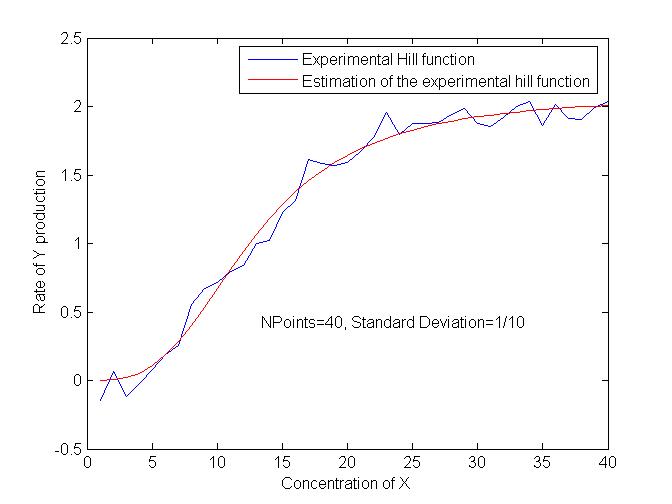Team:Paris/Modeling/Programs
From 2008.igem.org
(→Hill Function) |
|||
| Line 4: | Line 4: | ||
|style="background:#ffffff"| | |style="background:#ffffff"| | ||
| - | == | + | ==Complexations Caracterisations== |
| - | + | The first hypothesis is that a complexation reaction is fully determined by the following : | |
| - | + | <center> [[Image:reacthill.jpg]] </center> | |
| + | |||
| + | and that the rates k<sub>+<sub> et k<sub>-<sub> stay constants under all conditions. | ||
| + | |||
| + | We then have the following kinetic : [[Image:kinhill.jpg]] | ||
so, at steady-state : [[Image:sshill.jpf]]. | so, at steady-state : [[Image:sshill.jpf]]. | ||
| - | Then, we | + | Then, since we guess that the only data we will first have are the quantites of ''A'' and ''B'' introduced, the only equations we will deal with is the following, entirely determining the concentration C<sub>eq<sub> at steady-state : |
| + | |||
| + | <center> [[Image:Eqnss.jpg]] </center> | ||
* Inducer TF on ''Py'' : [[Image:hillact.jpg]] | * Inducer TF on ''Py'' : [[Image:hillact.jpg]] | ||
Revision as of 15:11, 15 September 2008
|
 "
"






